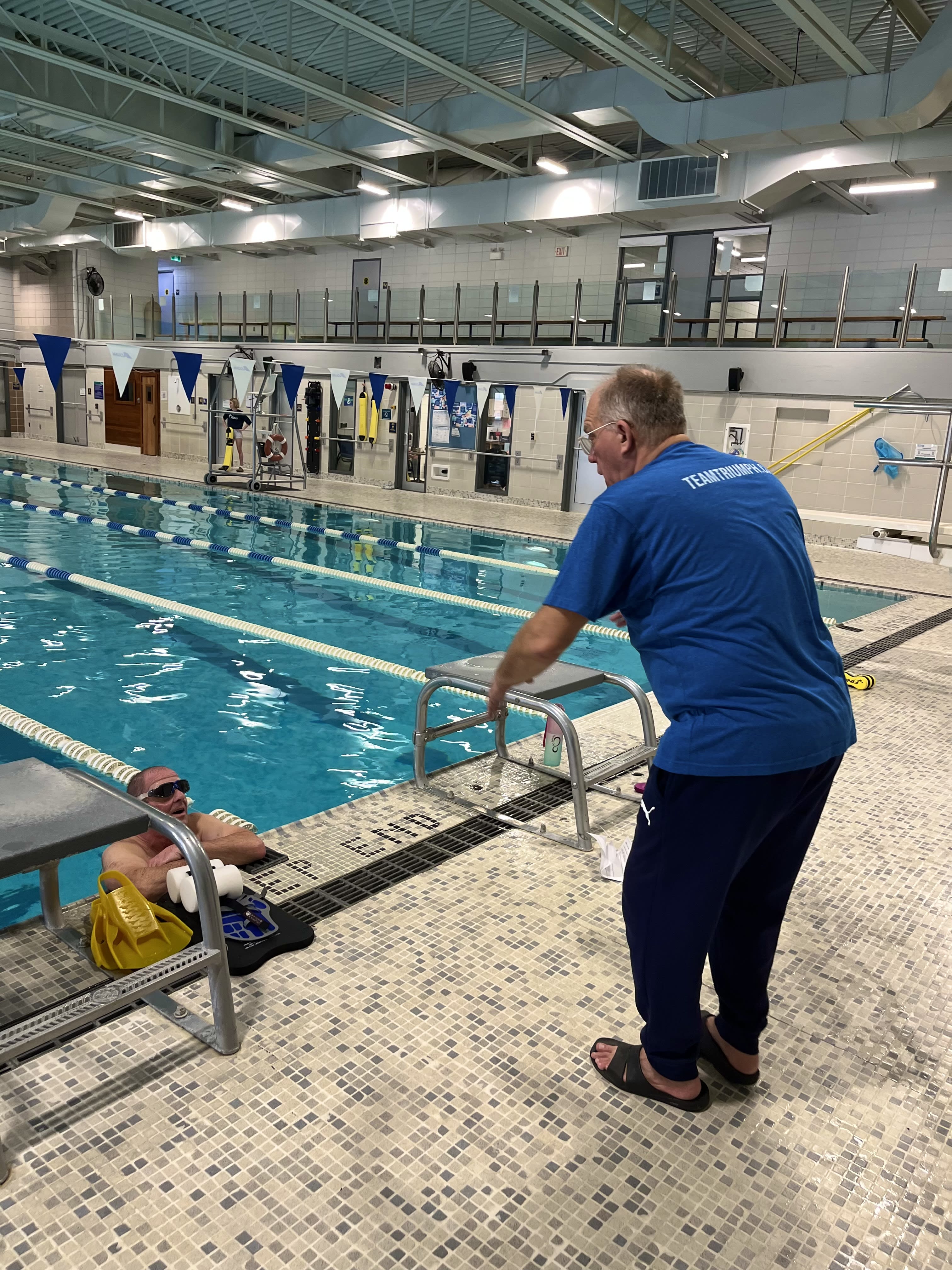
The catch phase in freestyle is the most powerful part of the swim stroke and yet this is also the part of the stroke so many swimmers have trouble catching on to. A faulty catch is also where rotator cuff injuries can stem from. Let's take a look at some past ideas on the catch, where we are now and what you can do to improve your catch.
There are many descriptions of the catch, one of which is the S pull. The story on the S pull as I have heard it is that the Americans saw an underwater video of the Russian swimmers back in the '70s and the optical illusion of the water and bad quality video cameras made it look like the Russians were creating an S underwater with their arms. Being that they were the fastest swimmer in the world at the time (and on performance-enhancing drugs!) everybody adopted the S pull. The problem with the S pull is that you're moving water in all kinds of directions towards both side walls which ultimately doesn't move you forward as efficiently!
The straight arm windmill was also a popular concept for efficiency but puts more strain on the shoulder joint by primarily using the rotator cuff and deltoid muscles and ignoring the most powerful muscles: the latissimus dorsi and serratus. Enter the catchy swim catch!
To get the most out of your swim catch you want to think about it as a strong, powerful paddle. The water presses against your hand, your forearm, and your upper arm. The elbow is bent and the thumb draws a straight line coming in under the middle of the eyes, nose, and mouth towards the belly button while the fingers point down towards the bottom of the pool. To make this happen smoothly, you must be rotated onto the same hip as the arm that's catching. Thanks to TriSwimCoach.com for this great image above showing the angle of the elbow and the imaginary line.
Catching on the breath stroke is an area where we see more challenges. Many newer swimmers are hanging on for dear life to get a breath and have completely forgotten about what the arm under the water is doing! The arm either drops and straightens or the forearm goes out beyond the elbow creating shoulder pain or rotator cuff injuries. Next time you're swimming, focus on your breath stroke catch and keep drawing that imaginary line towards your belly button while you're rotating onto that same hip. You might even find it easier to get an inhale in!
Helle Frederiksen, a retired professional triathlete and coach, shows a great demonstration here on the catch and how to strengthen your catch using Therabands
As you can see in our video this exercise can also be done in the gym using cable machines. We're just missing the description of the rotation here.
Underwater video is a great way to see what's going on with your stroke. To book a video lesson in Ottawa please contact us at info@pbest.ca. Keep working on that catchy swim catch and before you know it you'll be swimming more efficient and faster!

I would highly recommended Eric and Team Triumph!
Ian Ross

A year ago I could only tread water and had not run since childhood. With the amazing Virtual Olympic course, support, guidance, and tips from of all the folks at Team Triumph I've ended the season with my first Olympic distance triathlon under my belt and am hooked! Really looking forward to the 2025 season and even to the hard work over the winter to prepare. Karen Houle

I wanted to let you know that the Perth triathlon was a great experience, I somehow placed third in my age group! What a supportive group of participants (including Team Triumph athletes), cheering bystanders and volunteers.
Thanks to your swim lessons, I learned the technical basics and gained confidence to get back in the pool after decades. And it was really special doing this with Ann Laidlaw, my bestie for many years. We did a couple of additional swims with Kevin and Team Triumph people, also a great way to continue learning and practicing good technical form.
I will continue with lane swimming and who knows, maybe there's another triathlon in my future!